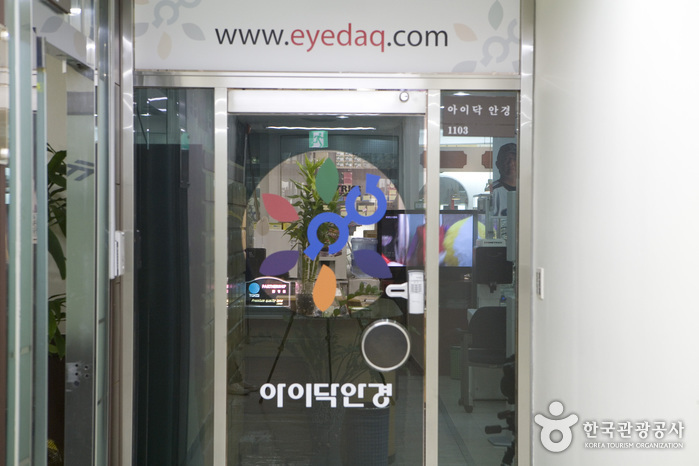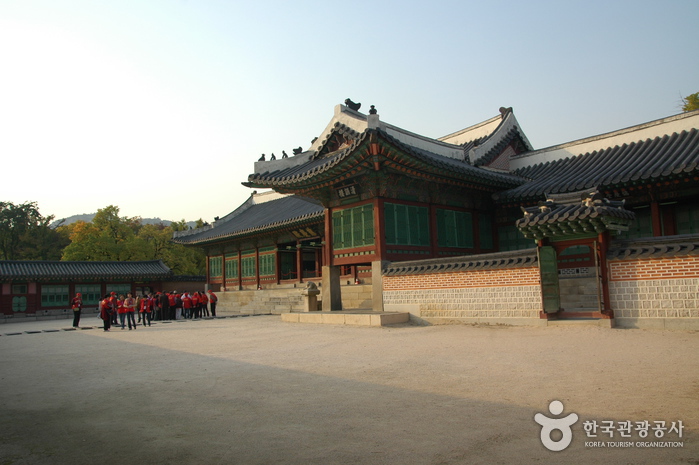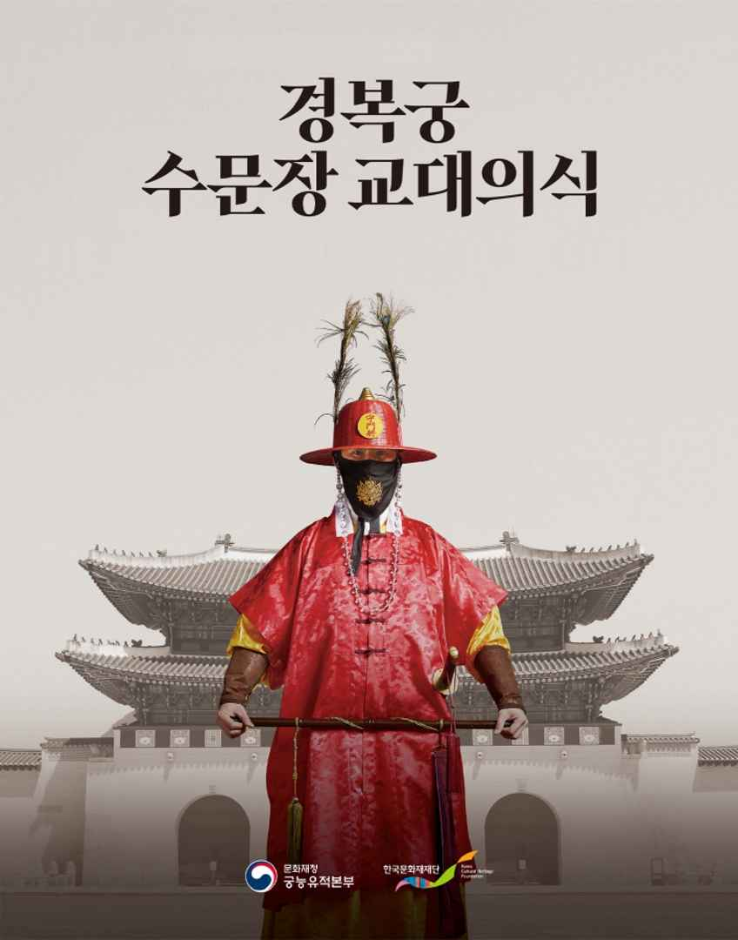The Children’s Museum of the National Folk Museum of Korea (국립민속박물관&국립민속박물관 어린이박물관)
1.1Km 2025-06-19
37 Samcheong-ro, Jongno-gu, Seoul
The Children’s Museum of the National Folk Museum of Korea, located within Gyeongbokgung Palace, showcases artifacts related to Korean traditional culture. This interactive museum allows children to experience and learn about various aspects of Korean traditional clothing, food, society, culture, and games firsthand. Especially catering to children from Asian countries, there is a service for renting items, and reservations are required for admission.
Eyedaq Optician (아이닥안경)
1.1Km 2020-04-24
6, Myeongdong 3-gil, Jung-gu, Seoul
+82-2-754-0110
Associated with Eye Matrix of Japan, Eyedaq offers every kind of eyeglasses: from high myopic lenses to progressive lenses and sports glasses. Its main customers include those in need of special eyeglasses: police officers, firefighters, professional sports players (such as football and baseball players), and skin and scuba divers. As a service to its Japanese clientele, the shop provides overseas shipping options to Japan. Customized eyeglasses can be ordered online. In addition, Eyedaq boasts an array of famous imported brands such as Hoya, Seiko, Pentax, and Zeiss.
Gyeongbokgung Palace Jagyeongjeon Tea Ceremony (경복궁 자경전 다례체험행사)
1.1Km 2020-03-12
161, Sajik-ro, Jongno-gu, Seoul
• 1330 Travel Hotline: +82-2-1330 (Korean, English, Japanese, Chinese) • For more info: +82-2-3210-4683
This traditional tea ceremony experience takes place at Jagyeongjeon Hall in Gyeongbokgung Palace every Saturday and Sunday. Participation is by reservation on a first come, first serve basis.
The ceremony includes a tea culture demonstration and experience, making honey cakes, traditional etiquette introduction, and lectures related to tea culture. To participate in the tea ceremony, download the application form from the Korea Cultural Heritage Foundation website and submit the form through email.
Hwangudan Altar (환구단)
1.1Km 2020-05-07
112, Sogong-ro, Jung-gu, Seoul
+82-2-3396-5842
Hwangudan Altar, also called Hwandan Altar, refers to an altar complex for the rite of heaven. The rites were first performed in the Goryeo dynasty by King Seongjong in the first month of 983 (2nd year of his reign), but was repeatedly adopted and abolished, and eventually stopped at the start of the Joseon dynasty.
Then in 1456 (2nd year of King Sejo), the practice was temporarily standardized and the rites were performed at Hwangudan Altar again in 1457. However, rites were again abolished in 1464 (10th year of King Sejo). It wasn’t until 1897 (34th year of King Gojong) when the Joseon dynasty was renamed as the Korean Empire and King Gojong ascended to emperor, that the rite was revived.
Now, Hwangungu Shrine and three stone drums stand at the location of the former altar complex. The three stone drums symbolize the instruments used for the rites. The shrine was completed in 1899, two years after the altar was started in 1897. Today, the Hwangungu Shrine still stands within the hotel grounds of the Westin Chosun Hotel.
Palace Royal Guard Changing Ceremony (수문장 교대의식)
1.1Km 2025-07-11
161 Sajik-ro, Jongno-gu, Seoul
+82-2-3210-1645
In the Joseon dynasty, the royal guards of the palace were gatekeepers who were responsible for guarding the the main gates of Gyeongbokgung Palace as well as the main gates of the city such as Heunginjimun Gate and Sungnyemun Gate. The royal guards worked in shift duties and were in charge of opening and closing Gwanghwamun Gate. Before the royal guard system was enforced in 1469, the palace gates were protected by soldiers of the central army. The Palace Royal Guard Changing Ceremony held at Gyeongbokgung Palace and the Gwanghwamun area reenacts the guard-changing procedure that took place during the Joseon dynasty, along with the reproduction of costumes and weapons, based on historical records.
V Spa - Lotte Avenuel Branch [Tax Refund Shop] (브이스파 롯데에비뉴엘)
1.1Km 2024-04-18
10F, 73, Namdaemun-ro, Jung-gu, Seoul
-
CH Carolina Herrera - Avenuel Branch [Tax Refund Shop] (CH캐롤리나헤레라 에비뉴엘)
1.1Km 2024-04-19
4F Lotte Department Store Main Branch AVENUEL, 73, Namdaemun-ro, Jung-gu, Seoul
-
BVLGARI - Lotte Avenuel Branch [Tax Refund Shop] (불가리 롯데 에비뉴엘점)
1.1Km 2024-04-18
73, Namdaemun-ro, Jung-gu, Seoul
-
Cartier - Lotte Avenuel Branch [Tax Refund Shop] (까르띠에 롯데에비뉴엘점)
1.1Km 2024-04-23
124, Singomae-ro, Giheung-gu, Yongin-si, Gyeonggi-do
-
Burberry - Lotte Avenuel Branch [Tax Refund Shop] (버버리 롯데 에비뉴엘점)
1.1Km 2024-04-18
73, Namdaemun-ro, Jung-gu, Seoul
-





![V Spa - Lotte Avenuel Branch [Tax Refund Shop] (브이스파 롯데에비뉴엘)](http://tong.visitkorea.or.kr/cms/resource/04/2888404_image2_1.jpg)
![CH Carolina Herrera - Avenuel Branch [Tax Refund Shop] (CH캐롤리나헤레라 에비뉴엘)](http://tong.visitkorea.or.kr/cms/resource/07/2888707_image2_1.jpg)
![BVLGARI - Lotte Avenuel Branch [Tax Refund Shop] (불가리 롯데 에비뉴엘점)](http://tong.visitkorea.or.kr/cms/resource/58/2889758_image2_1.jpg)
![Cartier - Lotte Avenuel Branch [Tax Refund Shop] (까르띠에 롯데에비뉴엘점)](http://tong.visitkorea.or.kr/cms/resource/88/2889788_image2_1.jpg)
![Burberry - Lotte Avenuel Branch [Tax Refund Shop] (버버리 롯데 에비뉴엘점)](http://tong.visitkorea.or.kr/cms/resource/29/2889829_image2_1.jpg)
 English
English
 한국어
한국어 日本語
日本語 中文(简体)
中文(简体) Deutsch
Deutsch Français
Français Español
Español Русский
Русский